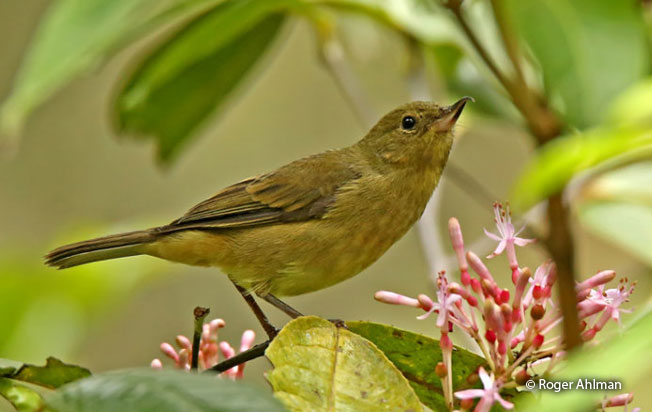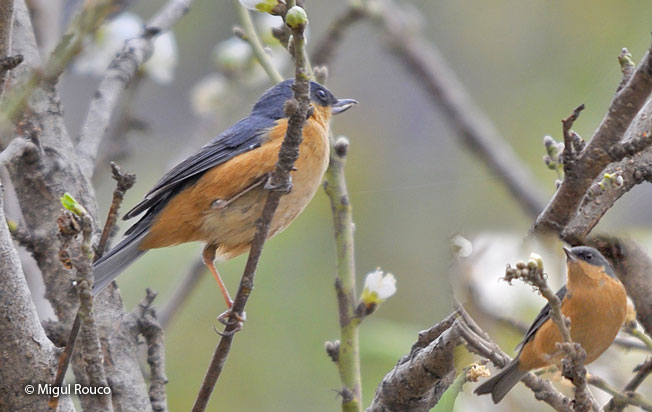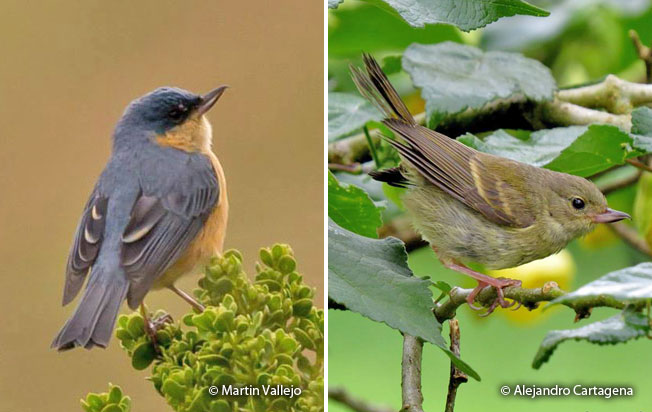Order: Passeriformes | Family: Thraupidae | IUCN Status: Least Concern

Age: Adult | Sex: Male | Loc. Eastern Andes, Colombia

Age: Adult | Sex: Female | Loc. Quito, Ecuador

Age: Adult | Sex: Males| Loc. Manu Road, Peru

Age: Adult | Sex: Male & Female | Loc. Cajamarca|E Colombia
Status: The Rusty Flowerpiercer is uncommon on the east and west (Piura to Lima) slopes of the Andes at elevations ranging between 1200-3500 m. It is also rare and local in coastal lowlands. The Rusty Flowerpiercer also occurs in Co, Ec, and Bo.
Name in Spanish: Pincha-Flor de Pecho Canela.
Sub-species: Rusty Flower-piercer (Diglossa sittoides decorata), J. T. Zimmer, 1930.
Meaning of Name: Diglossa: Gr. di, dis= double, twice and glossa= tongue. sittoides: Sitta= Genus Sitta, Linnaeus, 1758 and oides= resembling.
 Voice
VoiceReferences:
-
- Species range based on: Schulenberg, T. S., D. F. Stotz, and L. Rico. 2006. Distribution maps of the birds of Peru, version 1.0. Environment, Culture & Conservation (ECCo). The Field Museum. http://fm2.fieldmuseum.org/uw_test/birdsofperu on 03/01/2016.